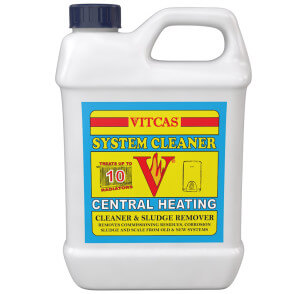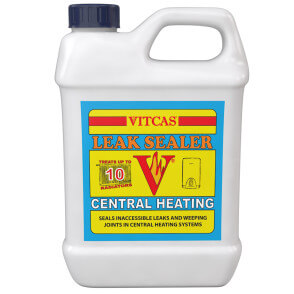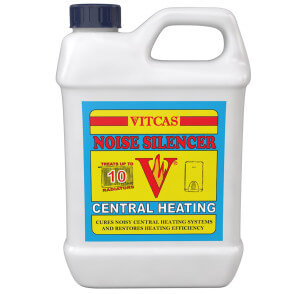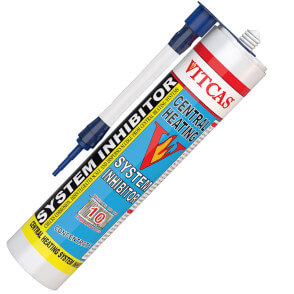Central Heating Inhibitor
Corrosion and scale protection for central heating systems
Vitcas Central Heating Inhibitor is a multi-purpose treatment solution formulated to protect central heating systems from internal corrosion, limescale formation, and the build-up of magnetite sludge. Designed for long-term performance, it maintains system efficiency, extends the life of components, and reduces the risk of boiler failure due to flow restriction.
This advanced inhibitor is compatible with all standard system materials, including aluminium, copper, brass, steel, as well as plastic and glass-fibre header tanks. It is suitable for use in sealed or open-vented systems, including those with microbore pipework constructed from plastic.
Why use a central heating system inhibitor?
In any central heating system, particularly those involving mixed metals, the presence of water over time leads to electrochemical corrosion, limescale deposition, and black magnetite sludge formation. These by-products reduce heat transfer efficiency, cause flow restrictions, and contribute to component wear.
Vitcas Central Heating Inhibitor prevents these issues by forming a protective film on internal metal surfaces, breaking down existing deposits, and inhibiting the conditions that allow sludge or scale to reform. It supports optimal operation of heat exchangers, radiators, circulation pumps, and valves, preserving system integrity over time.
How to apply a central heating inhibitor
Before adding the inhibitor, ensure the system is switched off and fully cooled to avoid injury or product degradation. Application methods vary depending on the type of heating system.
Open-vented Systems
In an open-vented setup, the heating system typically includes an expansion (feed and vent) tank, usually located in the loft or uppermost living area. To apply the inhibitor:
- Identify the smaller expansion tank (not the cold water storage tank).
- Inspect the tank for signs of corrosion or physical damage - any contamination risks should be resolved before dosing.
- Pour the required volume of inhibitor directly into the expansion tank.
- Circulate the system to ensure the inhibitor is fully drawn through the pipework.
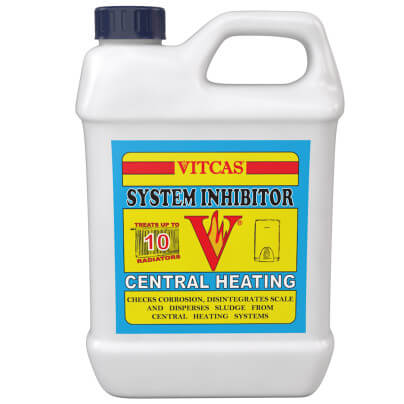
Sealed Systems & Combi Boilers
In sealed systems, such as combi boilers, the inhibitor is introduced through the boiler filling loop or via a radiator. The general process is:
- Turn off the heating system and allow all radiators to cool fully.
- If required, drain a small volume of water from the system using the lowest drain valve.
- Locate a suitable radiator and remove the bleed valve using a radiator spanner.
- Connect a dosing connector (or use a funnel with a flexible tube) to the radiator opening.
- Slowly introduce the inhibitor into the radiator.
- Remove the connector, refit the bleed plug, and repressurise the system if necessary.
- Switch the system back on and ensure proper circulation.







